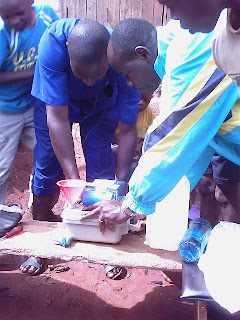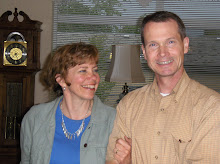



The iPhone took the world by force. What a cool invention! Is there room for an iPhone advancement in drinking water treatment for the developing world?
Some of you know that I joined the inventor's marathon a couple years back. I was naive before. I thought you just needed a good idea. That would be a 100 meter sprint. Instead, it's a marathon of patent filings, building prototypes, performing lab tests, writing business plans, and--the biggest challenge--finding money. Thanks to a good friend, Chris, and the assistance of Oregon State University and University of Denver, the early steps have been achieved. I'm still working on finding money to develop the idea into a product.
The idea is a household water treatment unit that uses ultraviolet light to disinfect water and is powered by a hand-crank or bicycle. It sounds more complicated than it is and you can see that in the photos of the prototype. It just might make sense in a city like Kampala. One hundred percent of the Ugandans that I quizzed said they treat the water coming out of the city system (with good reason, I would add). Most boil their drinking water using charcoal stoves. This costs money, takes time, uses up scarce firewood, and results in health problems from indoor air pollution. The use of UV disinfection in place of boiling and powering it by a hand-crank or bicycle, since most Kampala residents don't have electricity, makes sense.
To work, the product needs to be durable, find user acceptance, provide reliable treatment, and be affordable. I think the idea achieves all four. I've been in touch with potential investors and hope that one of these organizations or companies decides to fund its development. Then, we'll know.
By the way, most of the Ugandans that I interviewed obtain city water from a community tap. They don't have the luxury of running water in their homes. The bottom photo shows the community tap across the road from our apartment. Not having running water--meaning no flush toilet and no sink to wash your hands or dishes--is a huge thing.



































